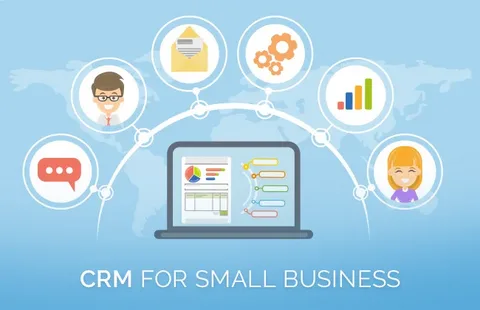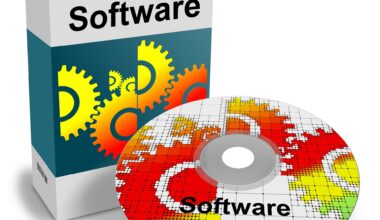It’s not necessary for technology that helps you connect with people to be hard to use. If you have a small business, a good customer management system for small business will help you sell more effectively and keep your team from having to become software firemen. I’ll explain what it is, why it’s important, how to choose one, and easy ways to get value quickly below. This is not a sales pitch; it’s sensible advice that puts people first.techhomz.com
What is a customer management system for small business — and why it matters
A customer management system for small business CRM software, which stands for “customer relationship management,” keeps track of customer transactions, archives client information, and helps you manage sales, marketing, and service all in one place. It’s like a digital rolodex that really helps you: it reminds you to follow up, shows you which customers are most likely to buy, and keeps all your discussions in one place so nothing gets lost.
Why it matters for small businesses:
-
- Keeps track of client history in one location, so you don’t have to look through a lot of spreadsheets.
-
- Saves time by automating things like follow-ups, reminders, and templates.
-
- Making conversations consistent makes the customer experience better.
-
- It helps you find chances and see what’s working.
HubSpot is a simple, free location for small businesses to start learning about practical CRM technologies made for small teams. Their overview of small-business CRM is a useful practical guide to determine what features are available and how much they cost. (HubSpot’s resource: CRM for Small Business). The U.S. Small Business Administration offers useful planning advice and tools for running and managing a small business well, from the point of view of a small firm that gets support from the government. (SBA resource: Small Business Guide.)
How a customer management system for small business changes daily routines (the easy wins)
A customer management system for small business It doesn’t have to be new to be beneficial. Small, useful adjustments pile up quickly:
One source of truth: Everyone on your team can see the same notes, orders, and history for each customer.
Automated follow-ups: Make it easy to send emails or reminders so that leads don’t lose interest.
Faster onboarding: New team members can join conversations without having to learn for weeks.
Smarter selling: Keep track of where potential customers are in the buying process and focus on the leads who are most likely to buy.
Here’s a short sample of what a typical day was like before and after a small firm got a customer management system:
Before:
- Lead information is spread out among email, text, and a notebook.
- Reminders to follow up that are done by hand and occasionally get ignored.
- Not being able to see which marketing activities are bringing in customers.
After:
- Automatically add leads to CRM with a source label.
- A series of automated emails nudges the lead, and after a certain amount of time, the salesperson gets a job to contact.
- The simple dashboard indicates which campaign brought in the most qualified leads.
- Small steps, big difference.
Key features to look for in a customer management system for small business
When looking for a customer management system for a small business, focus on features that add value right away without making things too complicated. Here’s a useful list:
History of contacts and interactions—A full timeline of calls, emails, and notes.
Automating tasks and follow-ups, like reminders, sequences, and scheduling.
Easy pipeline management: see the stages of leads that fit your sales process.
Email integration: Connect with your current email account (Gmail, Outlook).
Access from a mobile device—work on the go.
Basic reporting: income by source, conversion rates, and team activities.
Integrations are links that let your website, accounting, or marketing systems work together.
Control who can view what with security and permissions.
Cost and size — Starts out inexpensive or free and gets more expensive as your firm grows.
Keep in mind that complicated things take time. Start with a few features and add more as you need them.
Comparing common approaches to a customer management system for small business
There are differences between CRMs. These are three common ways to do things and when they work:
Spreadsheet and Calendar (beginner)
Best for: people who work alone or run a small business with very few contacts.
Pros: No cost, right away.
Cons: It’s hard to grow and there is no automation.
Lightweight CRM, like HubSpot Free or Pipedrive
Best for: Small groups that are ready to use automation and pipelines.
Pros: Easy to set up, cheap, and made for small businesses.
Cons: You might have to pay for extra features.
Full-featured CRM, such as Salesforce or Zoho with customizations
Best for: Companies that want to grow quickly or need a lot of customization.
Pros: Strong and works with a lot of other things.
Cons: More expensive and harder to learn.
The choice you make is the one you will actually use. For a lot of small businesses, the best thing they can do to be more productive is to switch from spreadsheets to a lightweight CRM.
Quick comparison table: customer management system for small business options
| Approach | Typical tools | Strengths | When to pick it |
|---|---|---|---|
| Spreadsheet + Calendar | Excel/Google Sheets + Google Calendar | Cheap, immediate | Solo owner with <50 contacts |
| Lightweight CRM | HubSpot Free, Pipedrive, Wave CRM | Easy setup, good pipelines | Teams 2–20 wanting quick wins |
| Scalable CRM | Salesforce Essentials, Zoho CRM | Deep features, integrations | Businesses expecting rapid growth or complex workflows |
Implementation roadmap for a customer management system for small business (practical, 30-60-90 day plan)
A simple rollout is the best way to use a customer management system for a small business. Here’s a useful 90-day plan.
Day 0 to 30: Plan and Get Ready
Write down what you want the CRM to do, like track leads, follow up, and give support.
Plan out the steps your customer takes from first contact to repeat purchase.
Pick a tool that fits your needs and budget. If you can, start with a free tier.
Days 30–60: Move and train
Import contacts from email and spreadsheets.
Make simple pipelines and templates for emails and quotes.
Give your team short, focused training sessions and make a one-page process guide.
Days 60–90: Set up automation and measure it.
Make one or two automations, like a welcome email and a task reminder three days later.
Begin keeping track of important metrics like leads, conversion rate, and average response time.
Iterate: get rid of things that slow things down and add one new automation.
A big, complicated launch that nobody uses is not as good as small, steady steps.
Common mistakes to avoid when choosing a customer management system for small business
Small businesses often fail not because the CRM is bad, but because they make mistakes that could have been avoided. Look out for these things:
Choosing the most expensive item instead of the simplest one that solves your problem.
Trying to automate everything at once is not a good idea; automation should follow a set process.
Not training people on how to use tools will make them fail, even simple ones.
If you don’t clean your data before importing it, you’ll end up with duplicate or old contacts that mess things up.
Not paying attention to basic privacy and security rules, like always setting permissions and backups.
Stay away from these things to keep going.
How a customer management system for small business helps grow revenue — specific examples
When used correctly, a customer management system for small businesses can help them make money. Here are some real ways it can help you make more money:
Follow-ups that happen faster lead to more conversions. Studies show that quick responses lead to more conversions. When follow-up is automated by a CRM, fewer leads are lost.
Personalized outreach leads to repeat business: You can send customers relevant offers instead of generic blasts by using tags and contact history.
Better pipeline visibility → more efficient focus: Sales teams spend time on leads that are most likely to close, which raises win rates.
Measured campaigns = smarter spending: CRM reporting shows which marketing channels bring in good leads, so you can put more money into the ones that work.
These are real results you can expect, not just marketing talk.
Integrations and extensions: what to connect to your customer management system for small business
To turn your small business’s customer management system into a hub, think about these useful and common integrations:
Gmail and Outlook are two examples of email and calendar programs that can help you organize your communication.
Link invoices to customers in accounting software like QuickBooks and Xero.
Payment processors like Stripe and PayPal speed up collections.
Forms and chat on your website automatically capture leads.
Email and ad platforms are marketing tools that keep track of the return on investment (ROI) of campaigns.
Helpdesk software lets you link support tickets to customer profiles.
Begin with one or two integrations that address your most pressing issues.
Security, privacy, and compliance for a customer management system for small business
Even small businesses need to be careful with customer information. A small business’s customer management system should have:
Encryption of data when it is at rest and when it is in transit.
Role-based access control lets you decide who can see and edit data.
Options for regular backups and exports.
Features that help you follow the rules (GDPR, CCPA if you work with affected customers).
Before you sign up, ask providers about their security certifications and policies for exporting data.
Measuring success: simple KPIs for a customer management system for small business
You don’t need complicated dashboards. Keep an eye on a few useful KPIs:
How many leads you get each month
Rate of converting leads into customers
How long it usually takes to respond to new questions
Rate of repeat purchases or customer retention
LTV, or lifetime value, is the amount of money a customer spends over their lifetime.
Before the CRM, set a baseline and then check for progress at 30, 60, and 90 days.
Choosing between free and paid tiers: a realistic small-business guide
Free plans are great to start. Paid tiers give more automation and integrations. Consider these points:
- If you have <5 users and basic needs, start free.
- Upgrade when you need:
- Automation sequences beyond simple reminders.
- Integration with finance or deep analytics.
- Increased contact limits and storage.
- Calculate ROI: how much time or lost revenue a paid feature would save or create.
Practical rule: Don’t pay for features you won’t use in the next 12 months.
Real user tips: getting your team to actually use the customer management system for small business
Adoption is everything. Try these human-centered tips:
- Keep the interface clean — hide advanced features until you need them.
- Assign a CRM champion — one person who can answer questions and keep the system tidy.
- Celebrate wins — show quick examples where the CRM helped close a deal or resolve a ticket.
- Make it daily: require team members to log interactions after each customer touchpoint.
- Avoid punitive enforcement; make it helpful and habit-forming.
People stick with tools that make their lives easier.
Two trusted starting points for your customer management system for small business
Rather than giving an overwhelming list, here are two well-respected places to explore first:
- HubSpot — CRM for Small Business — A free, user-friendly CRM built for small teams with easy upgrade paths for automation and marketing. If you want a low-friction start, HubSpot’s small-business page is a practical resource to compare features and get started quickly. (HubSpot: CRM for Small Business)
- U.S. Small Business Administration — Business Guide — For process planning and practical operational guidance that complements CRM adoption, the SBA’s business guide helps you map business processes, which is a smart first step before heavy tool investments. (SBA: Small Business Guide)
These two resources give you both hands-on product options and the operational framework to make your CRM adoption successful.
Final thoughts: keep it small, simple, and human
A customer management system for small business is not a silver bullet — but it is one of the most practical tools a small business can adopt to stay organized, responsive, and growth-minded. The secret sauce is not the software itself but how consistently your team uses it.
- Start with clear goals.
- Pick a simple tool that matches those goals.
- Train your team with real use cases.
- Automate small repetitive tasks first.
- Measure a few core KPIs and iterate.
If you follow those steps, your CRM will quickly move from “that new software” to an everyday teammate.










